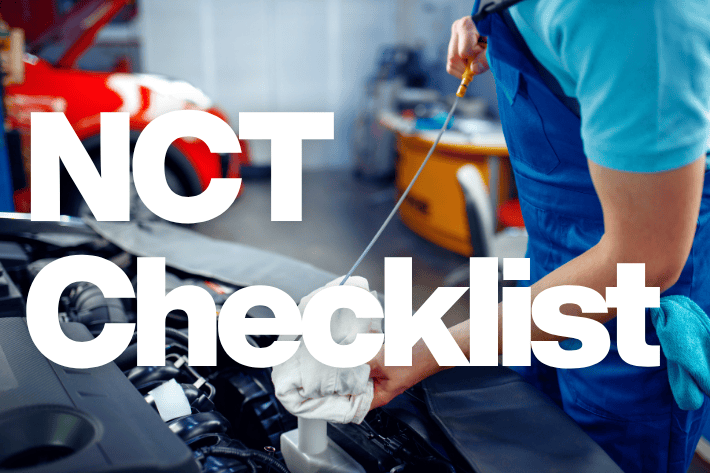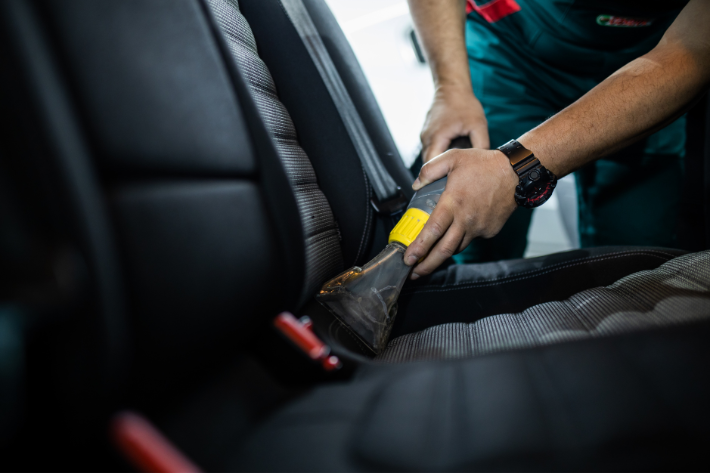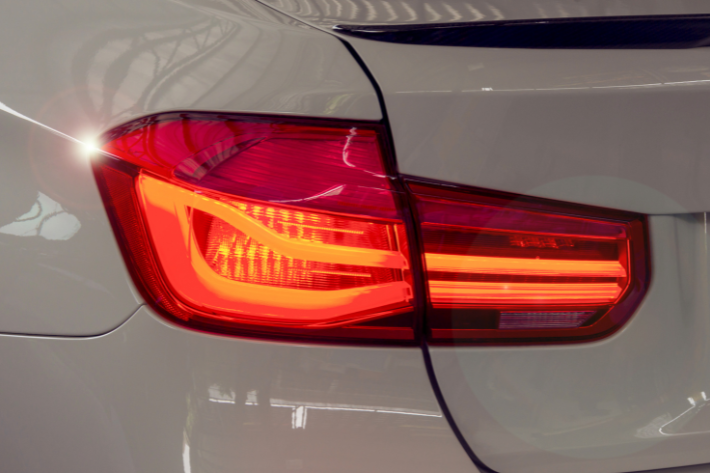NCT Checklist

Follow our tips to get your vehicle ready for its National Car Testing routine
The National Car Testing (NCT) service is a regular check-up of your vehicle’s health, which becomes mandatory for every car that’s more than three years old. And as it is checking the safety status of your vehicle, it can be a daunting appointment on your upcoming calendar.
But it shouldn’t be a scary process and even those who aren’t mechanically savvy ought to be able to prep their car for an NCT without panicking about it. Here, then, are our top tips to get your car ready for its NCT.
Scheduling
The NCT applies for cars which are four years old or older, but for vehicles aged between four and ten years old, the schedule is biannual – as in, your car only needs testing every two years. Once the car passes the age of ten, it must be tested every single year.
You get a reminder when your vehicle’s motor tax is due, but there’s no such thing for the NCT – the onus is on you to know when it is due for its first test, and then all subsequent procedures thereafter. Luckily, there’s a system to check when your car is due for an NCT on the NCTS website, which simply requires you enter your vehicle’s registration number to find out when the test is due. You can book an NCT up to 90 days before your certificate is due to expire, for reference.
Give the car a thorough clean – outside and in
You have to make sure that the lights, windows, mirrors and licence plates are all clear and undamaged before you submit your car to the NCT, because all of them will be checked by the tester who is evaluating your vehicle. It is advisable to get the underside of the car washed too, which is easily done at most brush washes.
It’s not just the outside but the interior needs attention too. For instance, if you have child seats in the back, the test is obliged to check they’re fitted properly – and if they’re not, your car will fail the NCT. Best to just remove them, as well as other clutter in the cabin and boot, to make your life (and the tester’s) easier.

Check all your lights work
Any blown bulbs in the vehicle’s exterior lighting systems are an instant NCT failure, so this is an essential check. You can either do this with the help of a friend or family member, who would stand outside the vehicle while you operate all the lights and tell you if they’re working properly, or you can do much of it looking at a reflection of the car in a large window. But you need to check every indicator bulb (front, rear and sides), the dipped and main-beam headlights, front and rear parking lights, brake lights, fog lights and the illumination of the rear number plate.
If any of these bulbs aren’t working, you’ll need to replace them. The good news is that car lighting bulbs are normally very cheap and they’re usually easy enough to replace yourself, even if you’re not a mechanic. However, modern cars can have LED lamp clusters and self-levelling light systems, which might mean it’s better to take the car to a decent local garage just to get a bit of assistance with the replacement of any failed bulbs. Incidentally, if you have very advanced LED lights, they can be higher voltage and it’s not necessarily a good idea to replace them without expert help – although LEDs are less likely to fail than the sort of older, conventional bulbs that are a doddle to replace.

Check all your car’s fluids are at the right levels
All of the engine oil, the radiator coolant, the brake fluid, the power steering fluid and the windscreen washer fluid are checked as part of the NCT. Topping these up, if they need replenishment, is normally a simple task and their filler points are easily identified under the bonnet. The brake fluid and power steering fluid will need more care and attention, though, so perhaps take the car to a trusted garage if you’re unsure of what you’re doing on either score.
Don’t ignore the warning signs
If there are any warning lights illuminated on the dashboard, or your car’s suspension is making a loud knocking noise, or the vehicle is pulling strongly to one side or the other when it should be driving straight, you’ll need to get it sorted ahead of the NCT. On the former point, airbag warning lights are an instant failure, and the tester might not even put the car through its test if the engine management light is blazing brightly in the dashboard instrument display.
Tyres, tyres, tyres
This is one of the most critical areas to check before an NCT, especially if your car is older and on or approaching an annual testing cycle. First of all, check the tyres’ sidewalls (the rubber sections which don’t roll along the road) to find an ‘E’ stamp on them. This shows they are EU-approved tyres, and such things have been a prerequisite of passing an NCT since April 2010. It’s pretty hard to find tyres which lack for the E-stamp, but part-worn items might not conform to the rules so check carefully.
After that, you are checking the tyres’ general condition. Watch out for bulges or cracks in the sidewalls, as they would fail you the test and you’ll need to replace the affected items. The tread depth (the patterns cut into the section of the tyre which rolls along the road surface) must be at least 1.6mm deep across the middle of the tyre. A straightforward way to check this is to get a €1 coin and insert it into the grooves of the tread. If you can see any of the gold outer ring at the bottom of the coin where it rests in the groove, your tyres need replacing immediately. Finally, check that they’re all inflated to the correct pressure – you can find the relevant information for this in the owner’s handbook, or (failing that) on a sticker that’ll either be in the door frame or the inside of the fuel-tank filler that’ll show you the right pressures.
Final Shakedown
The wheel nuts must be visible for the NCT, so remove hubcaps or alloy-wheel centre caps before bringing the car into the testing facility. Check your wipers and replace the blades if they’re badly worn or juddering over the screen. Make sure you leave plenty of time to arrive before the test and perhaps give the car a good run to fully warm up the engine before you submit the vehicle for its checks.
Paperwork
Your car won’t even be tested if you don’t bring the vehicle registration book along with you, as well as the registration certificate. And you must also bring some form of identification for yourself, as that has been a rule since May 2012. It doesn’t matter if it’s not the owner of the car bringing it for the test, but whoever it is must have ID with them.
The costs – and the fines if you avoid the NCT
Since the start of 2025, the costs of the NCT have gone up. It’s now €60 for your first test and €40 for a retest (if needed). If you book an appointment and fail to turn up for it, you’ll be charged a fee of €24. Payments can be made by cash, debit cards and most credit cards, but not cheques – and if you’re thinking you can avoid the NCT to save some cash, think again. It’s illegal to drive without a valid NCT certificate and the fine for doing so is the same as the test – €60 – although it’s also accompanied by three penalty points on your licence. And if you don’t pay that fine within 28 days, then the fee rises to €90.